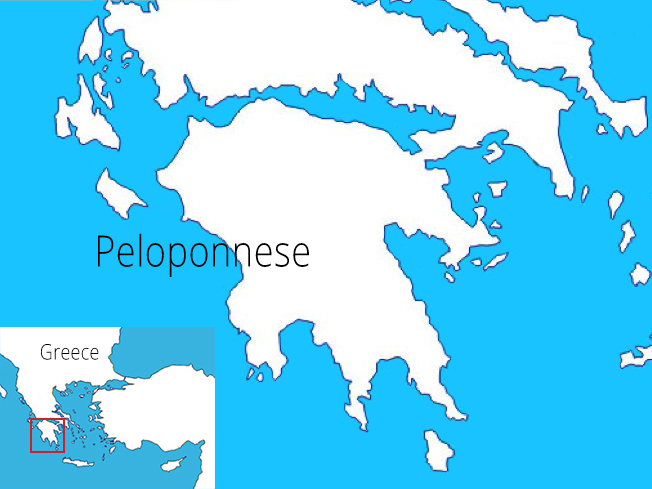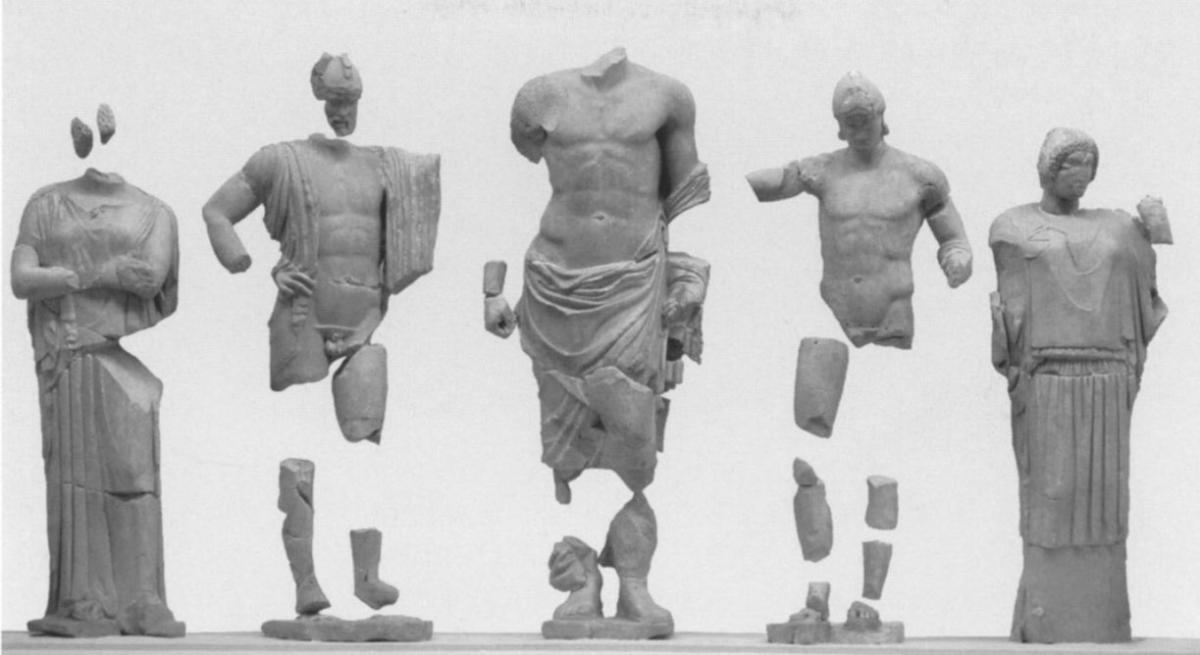The myth of Pelops relates to an early time even by mythological standards. Oenomaüs 'proposed a contest for any who wished to marry [his daughter, Hippodameia], the conditions being that the defeated suitor must die, but whoever should win would have the girl in marriage’ (Diodorus of Sicily, 4.73.3). Many suitors died in losing the race, but Pelops won. After his victory he married Hippodameia and ruled the area. The whole of the southern part of Greece is named after Pelops; it is the Island of Pelops - the Peloponnese.

Some traditions made Pelops’ race the origin of the Olympic Games. He appeared with Zeus, Oenomaüs, and Hippodameia in a group of sculptures on the east end of the Temple of Zeus at Olympia. Pelops’ grandson was the famous mythical High King, Agamemnon, who was said to wield the royal sceptre that was made for Pelops by the god Hephaestus (Iliad 2.100-110). Pelops is a relatively rare example of a Greek hero with a disability. A childhood incident left Pelops without a shoulder and he wore an ivory replacement, as described by the Roman poet Ovid in Metamorphoses 6.405+.
How did Pelops win? It depends who you ask. In some traditions, Pelops defeated Oenomaüs because Poseidon gave him a chariot with winged horses (e.g. Pindar, Olympian Ode 1). Apollonius of Rhodes describes the hero Jason wearing a cloak that depicts Oenomaüs’ chariot falling apart, allowing Pelops to win (Argonautica 1.752 (in Greek)). Some traditions made the fatal accident a result of treachery. Diodorus has Pelops bribing Oenomaüs’ charioteer, Myrtilus, to sabotage his chariot. Apollodorus has Hippodameia persuading Myrtilus (Epitome, 2. 3–10). Most traditions agree in having Myrtilus curse Pelops, with the curse affecting many generations (see e.g. Euripides, Oresetes, lines 988-1012). As a result of the curse, the mythical events of the Trojan War and its aftermath are all bound up in the myth of Pelops’ race.
These sculptures, as described by the travel-writer, Pausanius, are from the centre of the east pediment of the Temple of Zeus at Olympia. Oenomaus’ wife, Sterope (far l), Oenomaus (l), Zeus (c), Pelops (r), Hippodameia (far r). See Pausanius, Guide to Greece, 5.10.6.

Photo by H.R.Goette, from Barringer 2005
Some traditions say that Oenomaüs always gave the suitors a head-start, waiting behind to sacrifice a ram while the suitors sped off (Diodorus, 4.73.4). The National Museum of Athens houses a black figure lekythos vase (CC968) which appears to show Oenomaüs sacrificing while Pelops departs on a chariot of winged horses. In the Ure Discovery animation, Oenomaüs starts behind because he’s drinking wine.
These are the remains of the shrine of Pelops at Olympia, where he was worshipped as a hero.

Photo by S. Nevin, 2004


